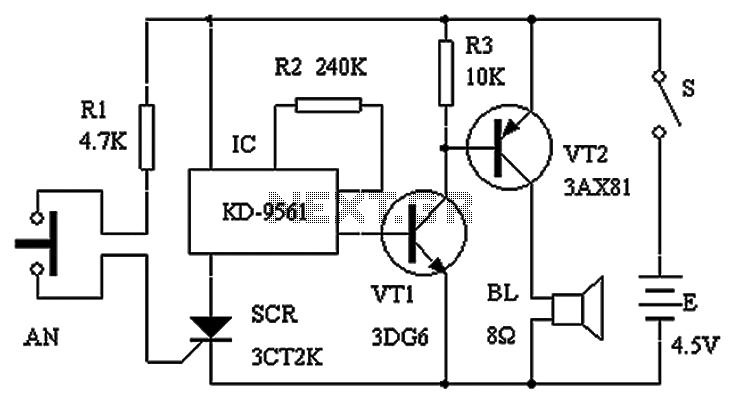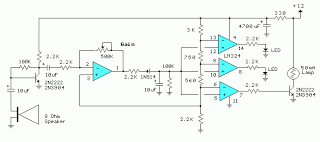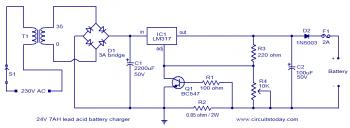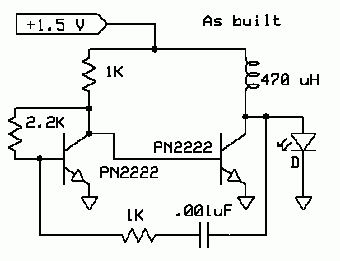
1kHz signal generator circuit diagram
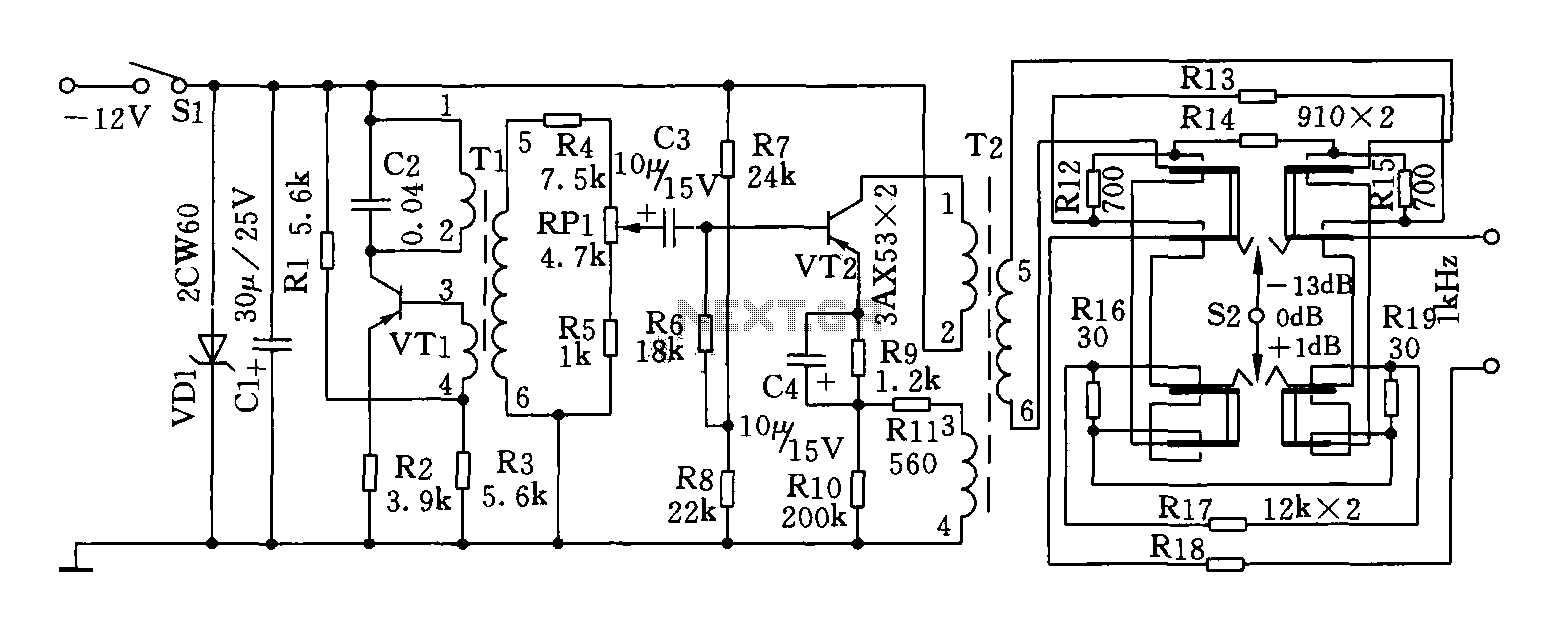
This circuit can generate a signal of 1 kHz and offers three output level options. It is suitable for testing communication equipment maintenance and barriers, providing a quick and accurate method to identify points of failure in televisions, stereos, radios, and other low-frequency amplifier circuits. Consequently, it serves as an ideal electronic signal source. Component selection includes resistors rated at RJ-0.125, capacitors of type CBM, electrolytic capacitors of type CDX, and switches S1: KNX (2 1), S2: JT360 (small pull key). Transformers T1 and T2 utilize MTT25 ferrite pots, with T1's L1-2 using 0.09 mm high-strength wire wound with 1540 turns, L3-4 with 0.09 mm high-strength wire wound with 150 turns, and L5-6 with 0.09 mm high-strength wire wound with 330 turns. For T2, L1-2 is wound with 0.09 mm high-strength wire with 1528 turns, L3-4 with 0.09 mm high-strength wire with 162 turns, and L5-6 with 0.09 mm high-strength wire wound with 540 turns.
This circuit employs a 1 kHz signal generator that is essential for diagnostic and maintenance applications in various audio and communication devices. The three selectable output levels allow for flexibility in testing different equipment sensitivities. The choice of components is critical for ensuring the reliability and accuracy of the generated signal.
The resistors (RJ-0.125) are selected for their stability and precision, which is vital in maintaining the integrity of the signal. The capacitors (CBM and CDX) are chosen based on their capacitance values and voltage ratings to ensure they can handle the necessary frequencies without distortion or loss of signal quality. The switches (KNX and JT360) provide user-friendly control over the circuit's functions, allowing for easy selection of output levels.
The transformers (T1 and T2) are designed to efficiently couple the generated signal to the output while minimizing losses. The use of MTT25 ferrite pots enhances the magnetic properties, allowing for better performance at the specified frequency. The winding configurations for both transformers are meticulously calculated to achieve the desired inductance and impedance matching, ensuring optimal signal transfer.
Overall, this circuit represents a robust solution for testing and diagnosing low-frequency amplifier circuits, making it an invaluable tool for technicians and engineers in the field of electronics.This circuit can generate a signal lkHz and three output level options. It can be used to test communication equipment maintenance and barriers, can be quickly and accurately find the point of failure televisions, stereos, radios, and other low-frequency amplifier circuit. Therefore, it is an electronic device ideal signal source.Component selection: resistance using RJ-0.125, capacitors using CBM, electrolytic capacitors using CDX, switch Sl: KNX (2 1), S2: JT360 (small pull key). Transformers Tl, T2: using MTT25 ferrite pot, Tl of L1-2 with µ0.09mm high strength wire, wound 1540 turns, L3-4 with the 0.09mm high strength wire, wound 150 turns, L5-6 µ0.09mm with high strength wire, wound 330 turns; T2 of L1-2 with µ0.09mm high strength wire, wound 1528 turns, L3-4 with µ0.09mm high strength wire, wound 162 turns, L5-6 with wins 0.09mm high strength wire, wound 540 turns.
This circuit employs a 1 kHz signal generator that is essential for diagnostic and maintenance applications in various audio and communication devices. The three selectable output levels allow for flexibility in testing different equipment sensitivities. The choice of components is critical for ensuring the reliability and accuracy of the generated signal.
The resistors (RJ-0.125) are selected for their stability and precision, which is vital in maintaining the integrity of the signal. The capacitors (CBM and CDX) are chosen based on their capacitance values and voltage ratings to ensure they can handle the necessary frequencies without distortion or loss of signal quality. The switches (KNX and JT360) provide user-friendly control over the circuit's functions, allowing for easy selection of output levels.
The transformers (T1 and T2) are designed to efficiently couple the generated signal to the output while minimizing losses. The use of MTT25 ferrite pots enhances the magnetic properties, allowing for better performance at the specified frequency. The winding configurations for both transformers are meticulously calculated to achieve the desired inductance and impedance matching, ensuring optimal signal transfer.
Overall, this circuit represents a robust solution for testing and diagnosing low-frequency amplifier circuits, making it an invaluable tool for technicians and engineers in the field of electronics.This circuit can generate a signal lkHz and three output level options. It can be used to test communication equipment maintenance and barriers, can be quickly and accurately find the point of failure televisions, stereos, radios, and other low-frequency amplifier circuit. Therefore, it is an electronic device ideal signal source.Component selection: resistance using RJ-0.125, capacitors using CBM, electrolytic capacitors using CDX, switch Sl: KNX (2 1), S2: JT360 (small pull key). Transformers Tl, T2: using MTT25 ferrite pot, Tl of L1-2 with µ0.09mm high strength wire, wound 1540 turns, L3-4 with the 0.09mm high strength wire, wound 150 turns, L5-6 µ0.09mm with high strength wire, wound 330 turns; T2 of L1-2 with µ0.09mm high strength wire, wound 1528 turns, L3-4 with µ0.09mm high strength wire, wound 162 turns, L5-6 with wins 0.09mm high strength wire, wound 540 turns.

